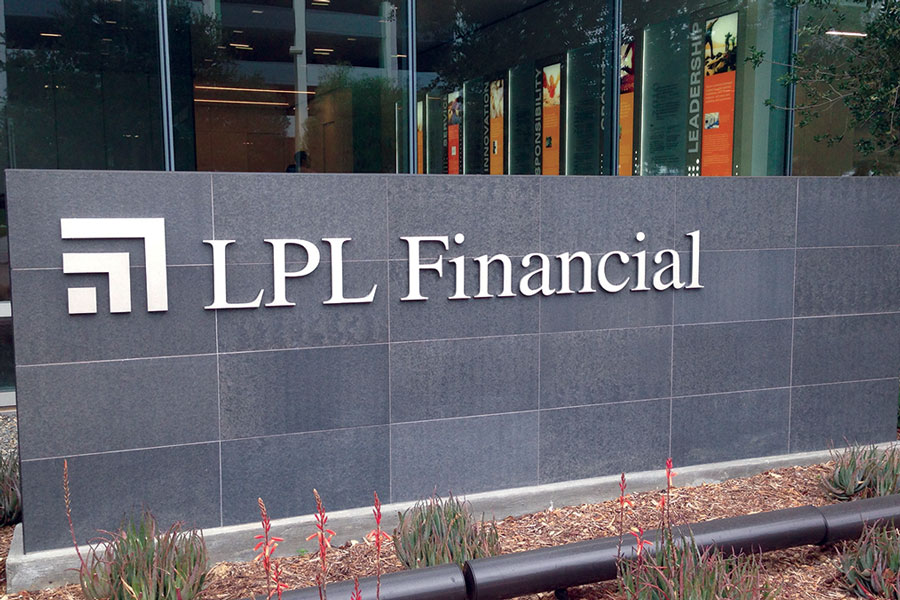

LPL Financial Holdings Inc. saw financial advisers and their clients turn to commission-based products that promise yield, including fixed income, annuities and alternative investments, in recent months as equities struggled and anxiety about a U.S. recession permeate the market.
Commission revenue at LPL Financial for annuities increased 4% in the third quarter, compared to the third quarter of 2021, reaching $327.4 million, while commissions from sales of fixed income were up 9% over the same period, reaching $32.7 million.
Commission revenue for the same products was also up, 5% and 13% respectively, compared to the quarter ending in June, according to LPL Financial's third-quarter earnings report, which was released Thursday afternoon after the market closed.
Over the past 12 months, the S&P 500 index has declined 15.4% through trading Friday morning. Shares of LPL Financial Holdings (LPLA) were trading at $254.59, just below the fresh 52-week high of $256.59 reached Thursday.
The increase in commission revenue speaks to the impact of the market downturn this year; fee revenue at independent broker-dealers like LPL has been climbing for years.
During a conference call with analysts Thursday, LPL CEO Dan Arnold was asked about current investor demand for more brokerage products that charge a commission, compared to fee-based advisory products, which have been the long-term darling of large firms like LPL.
"We are seeing some mix," Arnold said. "I think you're right in assessing that it's very much sort of environmentally driven by the macro market conditions."
"Fixed income is a good example of that," he noted. "I think you're also seeing it in the alt space and in annuities. I think you've also seen it show up in a bit of a slowdown in some of the transition from brokerage to advisory."
LPL's financial adviser head count at the end of the third quarter was 21,044, up 173, or 1%, compared to the end of June and up 1,417, or 7%, from last September. The firm reported total revenue for the quarter of close to $2.2 billion, an increase of 6% compared to June and up 7% from the end of last September.
Recruited assets for the quarter were $13 billion, the company reported, while recruited assets over the trailing twelve months were $84 billion, up approximately 2% from a year ago.

Elsewhere in Utah, Raymond James also welcomed another experienced advisor from D.A. Davidson.

A federal appeals court says UBS can’t force arbitration in a trustee lawsuit over alleged fiduciary breaches involving millions in charitable assets.

NorthRock Partners' second deal of 2025 expands its Bay Area presence with a planning practice for tech professionals, entrepreneurs, and business owners.

Rather than big projects and ambitious revamps, a few small but consequential tweaks could make all the difference while still leaving time for well-deserved days off.

Hadley, whose time at Goldman included working with newly appointed CEO Larry Restieri, will lead the firm's efforts at advisor engagement, growth initiatives, and practice management support.
Orion's Tom Wilson on delivering coordinated, high-touch service in a world where returns alone no longer set you apart.
Barely a decade old, registered index-linked annuities have quickly surged in popularity, thanks to their unique blend of protection and growth potential—an appealing option for investors looking to chart a steadier course through today's choppy market waters, says Myles Lambert, Brighthouse Financial.
